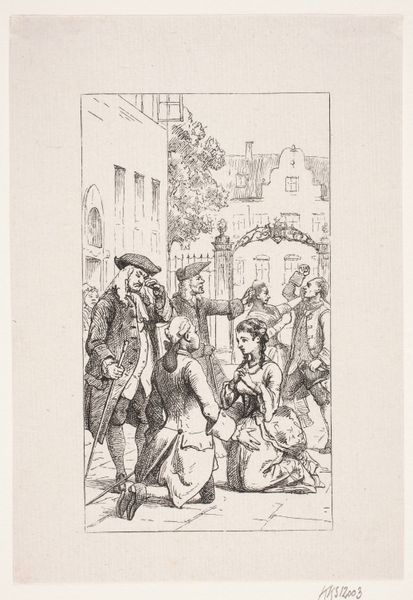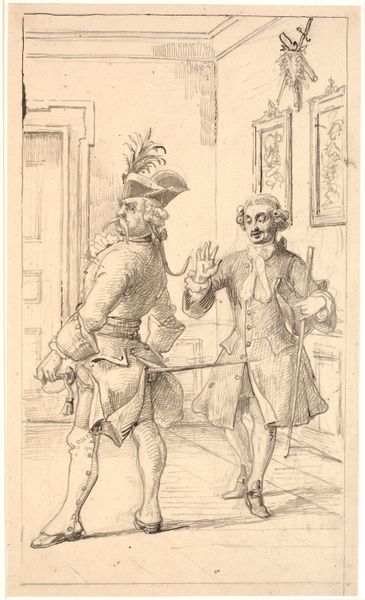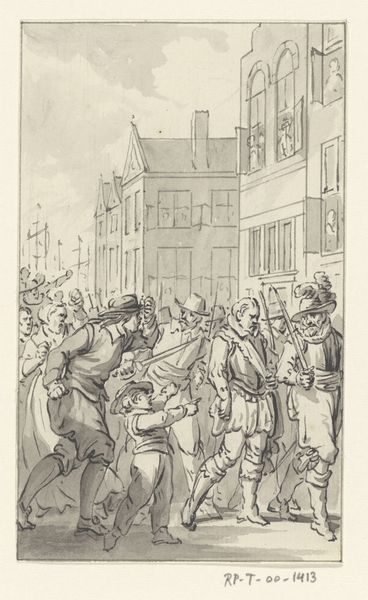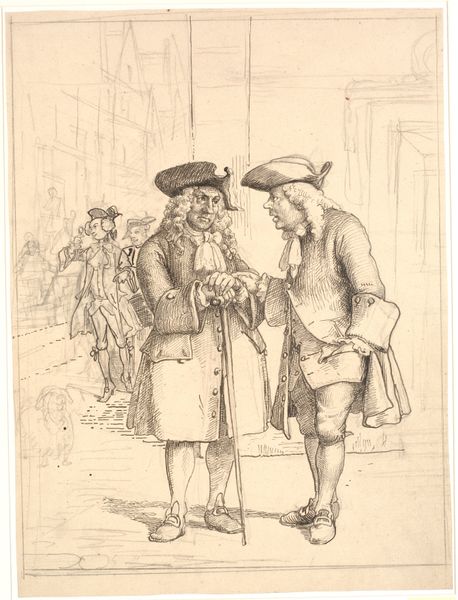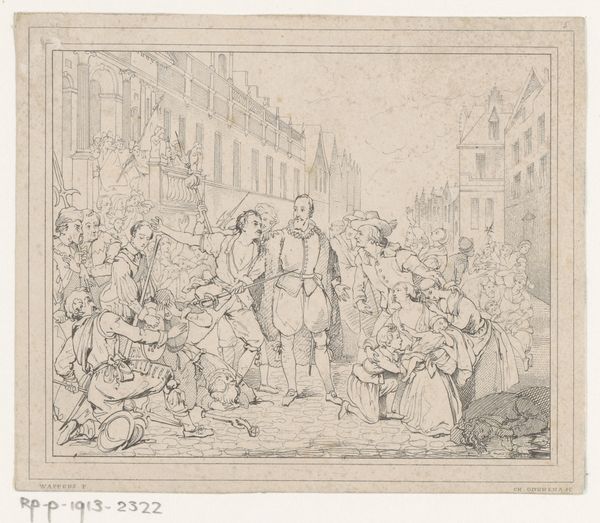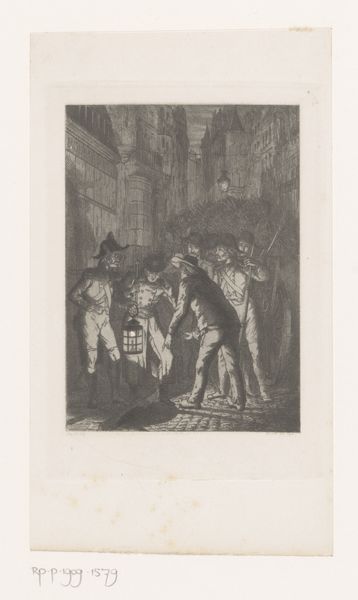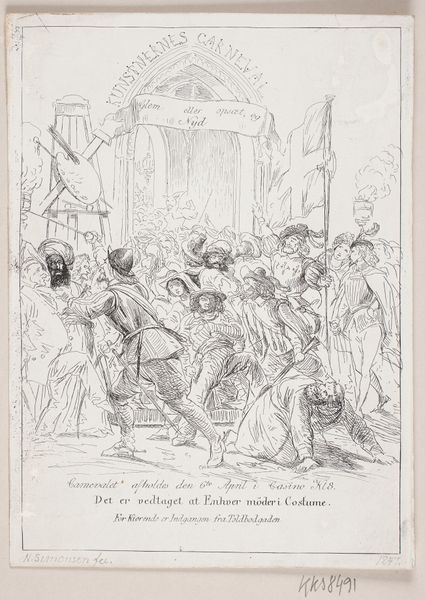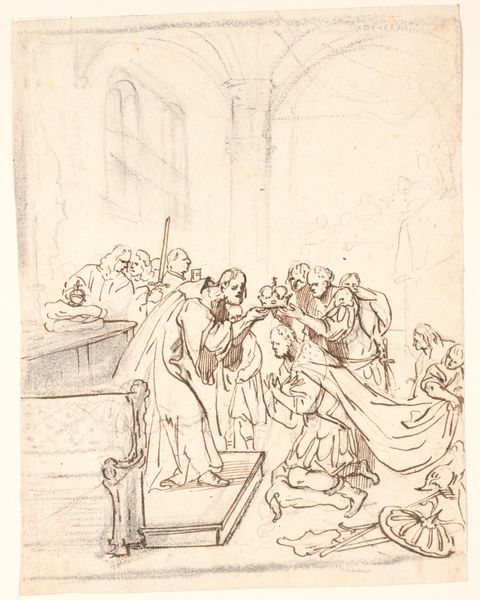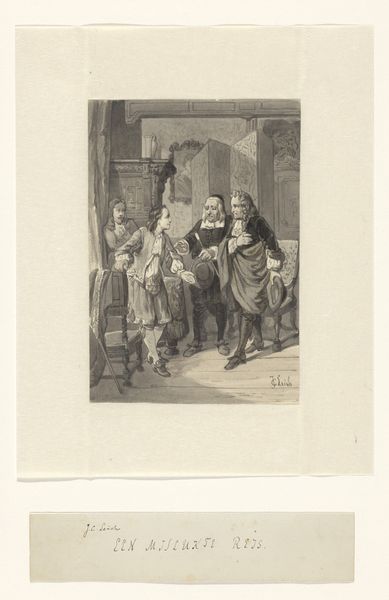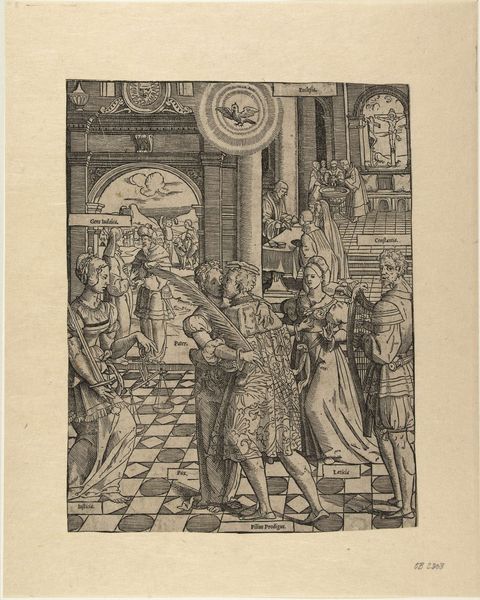
Dimensions: 527 mm (height) x 330 mm (width) (bladmaal)
Curator: Wilhelm Marstrand created this pen and ink drawing titled "Slutningsscenen af Henrik og Pernille" between 1865 and 1873. It's quite detailed, even though it is, at its heart, a sketch. What are your initial thoughts? Editor: There's a wonderful sense of drama here. The almost chaotic assembly of figures really draws you in. It looks like it could be an illustration for a theatrical performance, with the man kneeling giving particular focus to gesture and body language. Curator: Yes, its narrative qualities align with Marstrand's engagement with genre-painting themes, a common practice in Romanticism. The image depicts the final scene from Ludvig Holberg's play "Henrik and Pernille." Note the artist's emphasis on process, on achieving the forms in front of us through clear evidence of layered work and construction by hand. Editor: Seeing those hats really gets me thinking about social strata at the time. Their style is more than a mere adornment. Rather, they serve as potent signifiers of identity, almost totemic. Notice, too, that the hats are echoed in that abandoned shoe in the foreground, creating a visual dialogue of status and disregard. Curator: Right. Marstrand's choice of pen and ink allows for remarkable detail in costume and setting, even as the medium itself might be considered, at the time, a step "down" from oil painting in the hierarchy of artistic production. It suggests, perhaps, an intention to democratize representation. Editor: The gathering of onlookers around the kneeling man amplifies the gravity of the scene. They represent, almost, the audience judging the actors within the sketch. In the composition, their faces convey curiosity and concern—universal emotions rendered through the language of a specific time. They seem to observe with our eyes, acting almost like witnesses to the story that unfolds before us, a symbolic stand-in for contemporary society. Curator: Ultimately, the image reminds us of the complexities inherent in the materials and methods artists employed during the Romantic period, even while addressing the familiar and humorous narratives that pervaded popular culture at the time. Editor: Indeed. Beyond the narrative itself, this piece showcases Marstrand's sensitivity to gesture, symbolism, and cultural cues, turning a simple drawing into a window onto another time.
Comments
No comments
Be the first to comment and join the conversation on the ultimate creative platform.
